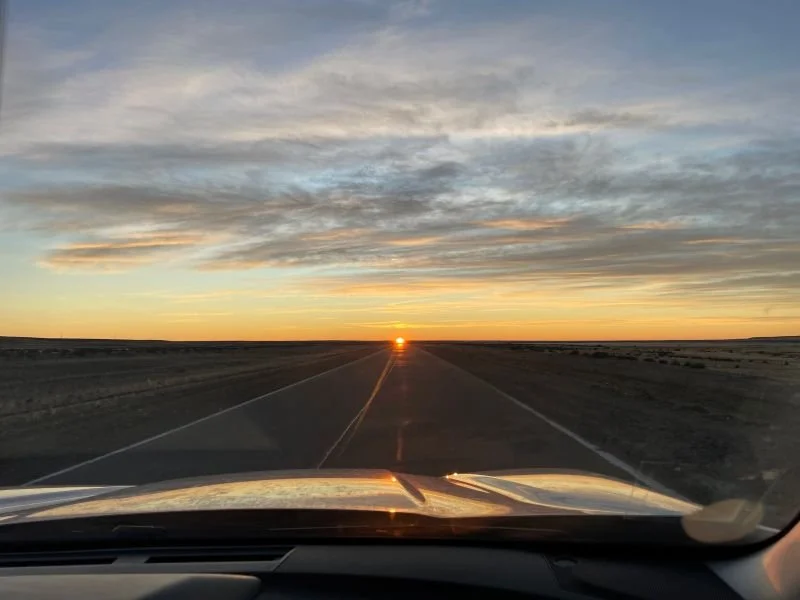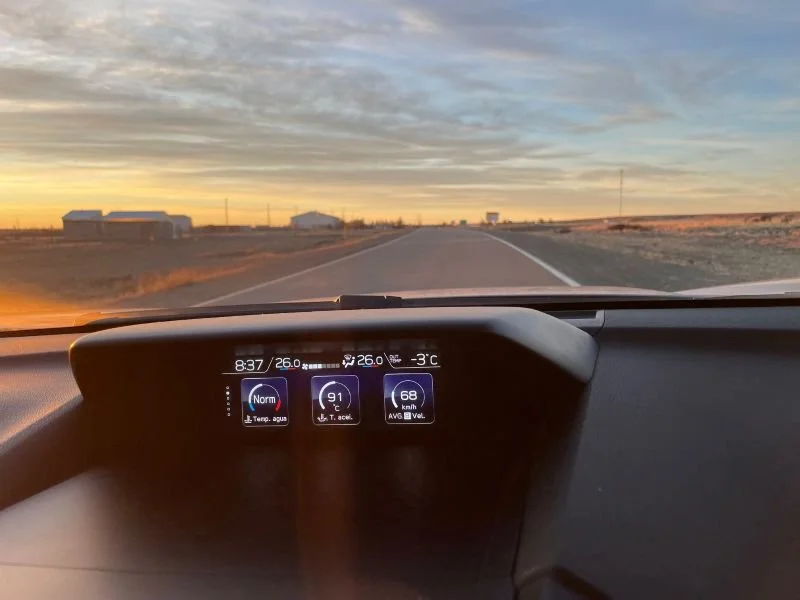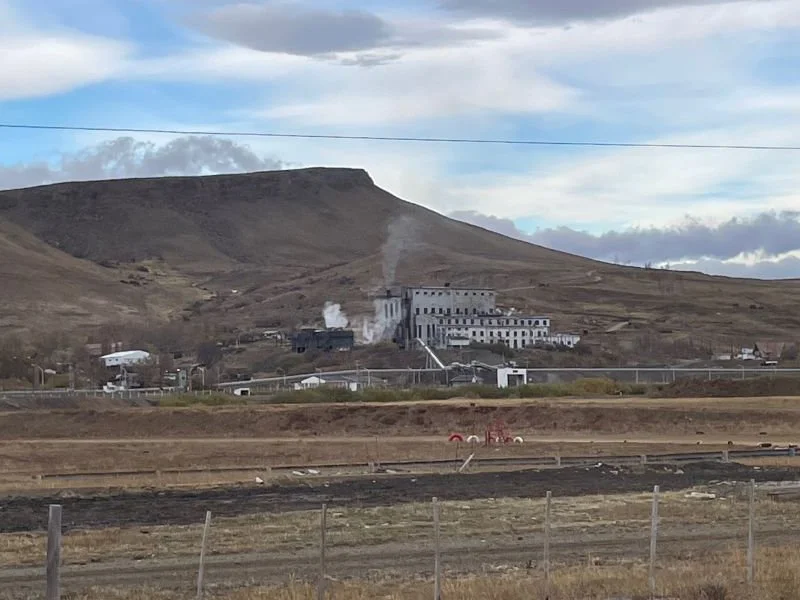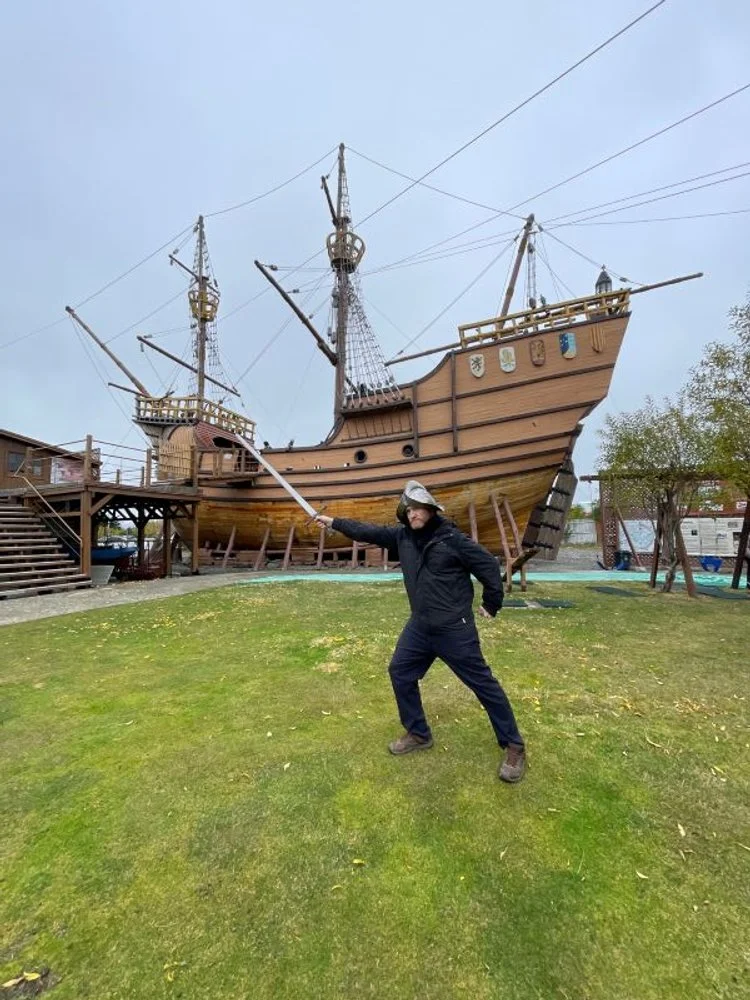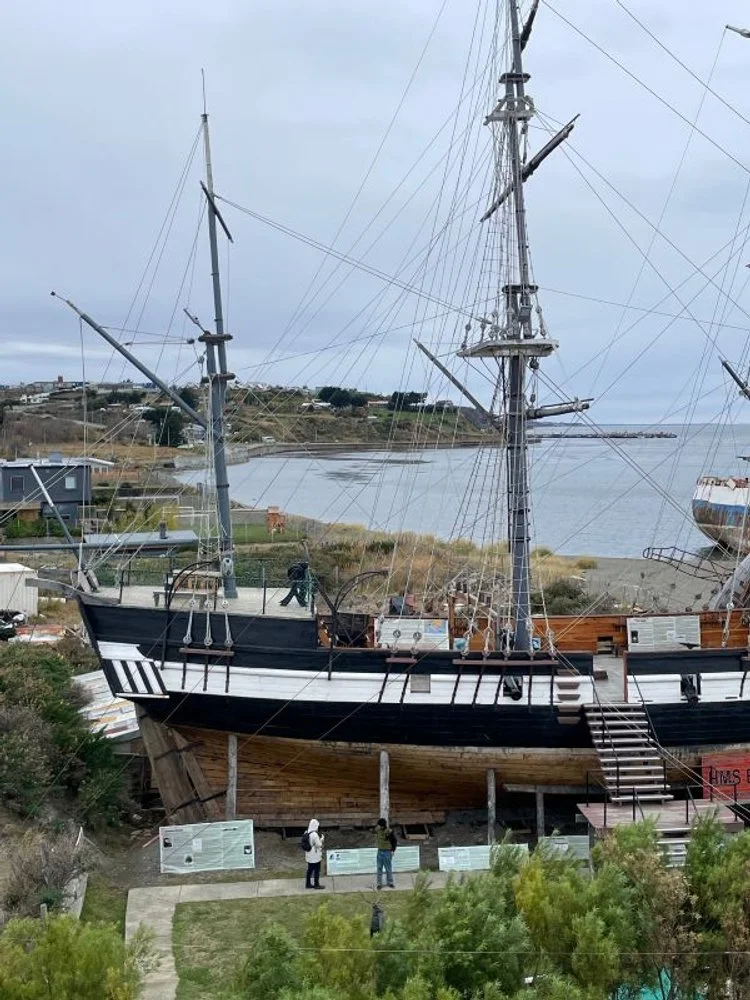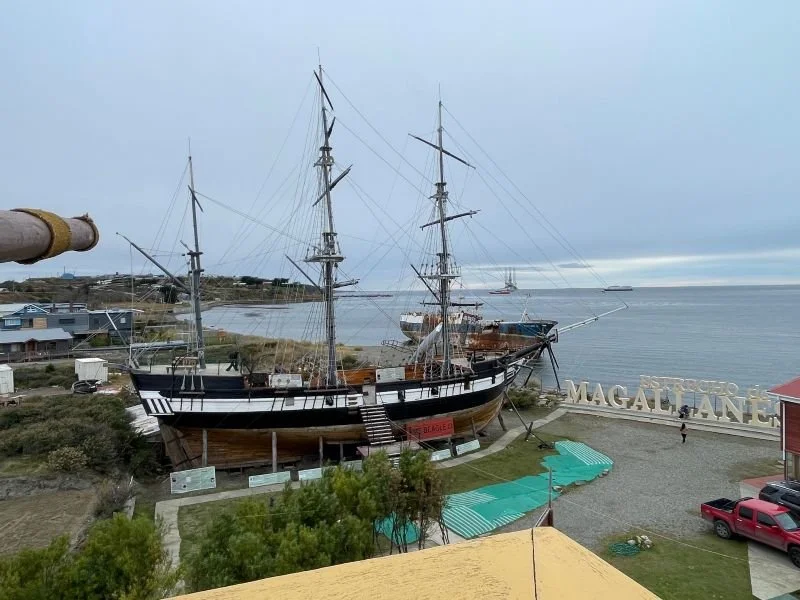Sunrise over Patagonia, and ships in the Strait of Magellan
The day following our visit to the Perito Moreno Glacier, day, we headed away from El Calafate back to Chile, and drove across the border to Puerto Natales. We left before dawn. As the early morning light rose across the treeless Patagonian plain, we could see it was -3 degrees outside the car. The views across this freezing plain during the changing colours of cold sunrise (with mountains distant in the background) was almost as amazing as the mountains and glaciers themselves.
Shortly before leaving Argentina, we passed through a small industrial town called Rio Turbio. There are several large mineral processing plants that we passed by, which look almost abandoned (although they are still operating), and this run-down look on a very cold morning made us feel like we were on the movie set of a post-apocalyptic Hollywood movie!
On arrival back in Puerto Natales, we returned our hire car and jumped on a bus to Punta Arenas, which was about a three-hour drive. So, we had a bit of driving that day and it was safe to say by the time we got to Punta Arenas we were pretty knackered. (Map below)
Punta Arenas is on the shore of the Straits of Magellan, named after himself by Ferdinand Magellan on an expedition that aimed to find a passage from the Atlantic to the Pacific Ocean. (Map below)
We stayed there for two nights and on our one full day in Punta Arenas, we went to a museum called Museo Nao Victoria, where they had a life size replica of the Victoria, one of the five ships that Magellan used to do the first circumnavigation of the globe. This ship is a ‘Carrack, which is the smaller cousin of the famous ‘Spanish Galleons’. With its steeply raised forecastle at the bow and quarterdeck at the stern, it looked like frightening pirate ship! However, it was still very small considering the distance it sailed through the waves of the high seas, and it is very hard to imagine living on such a small boat for so long – about three years.
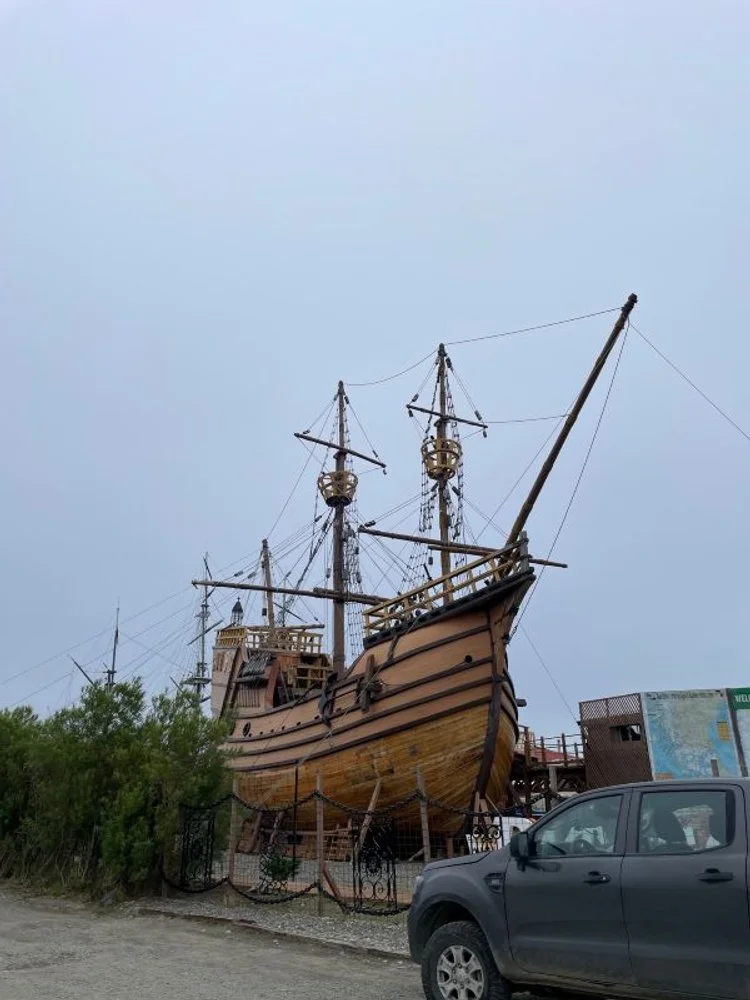
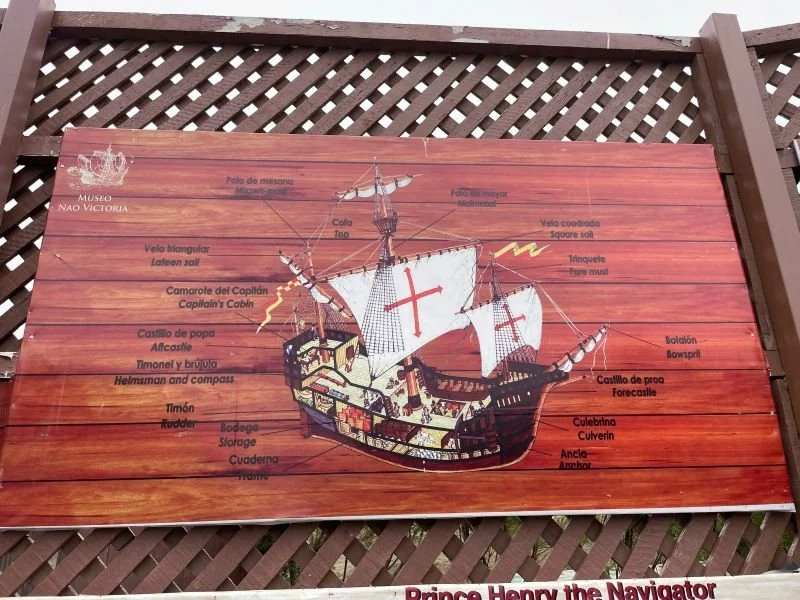

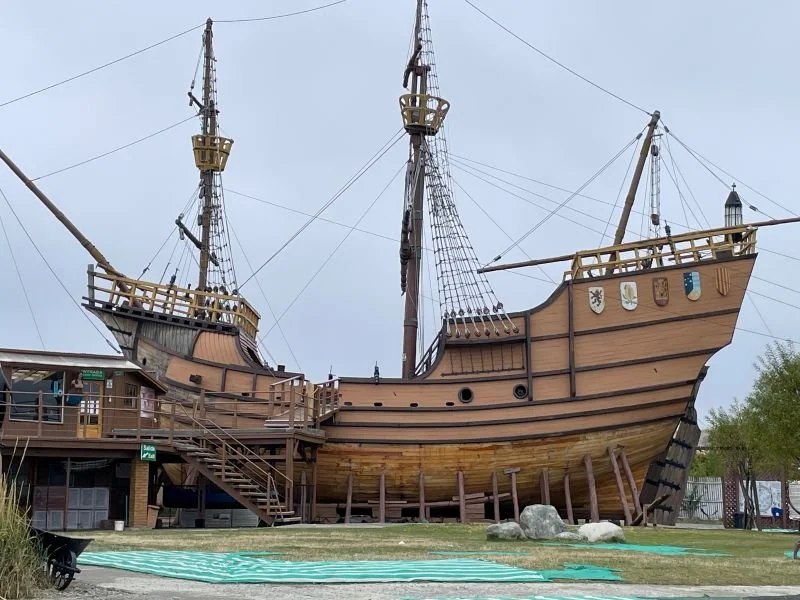
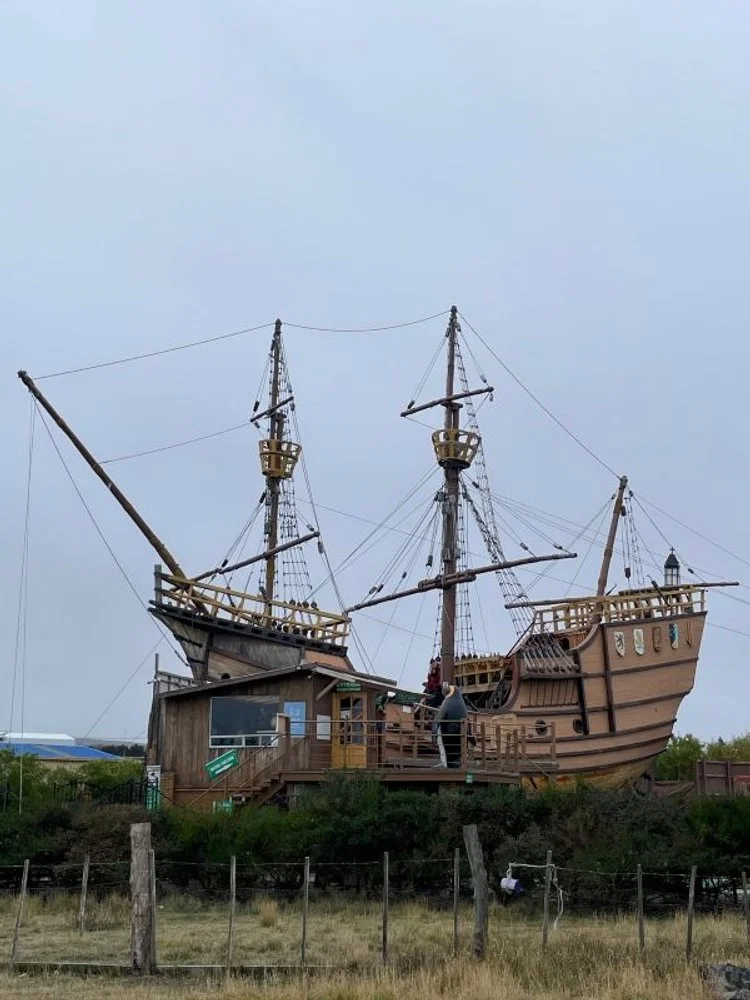


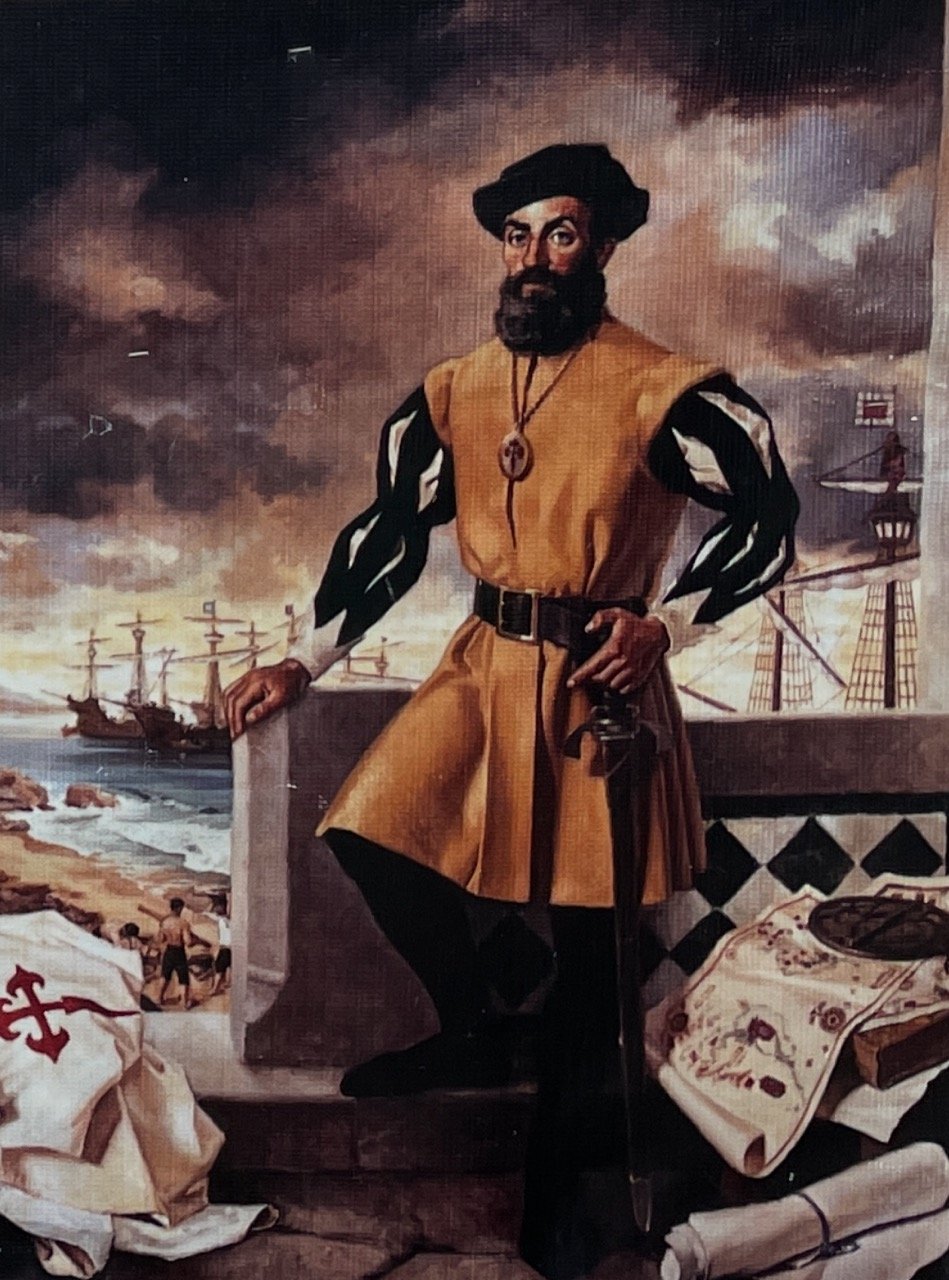
In the maritime museum, they also had a life-sized replica of the HMS Beagle, which some Australians may know of. The ship was carrying Charles Darwin, who was a naturalist, geologist, and biologist. He is known for contributions to evolutionary biology. The ship itself is quite famous in Australia for being the first ship to do a full survey of the Australian coast. While they were on their big voyage around the Australian coast, they named several locations such as Port Darwin and the Beagle Gulf.
A third ship was a life size replica of the ‘Ancud’ Schooner, which I didn’t know much about. It was a boat that was built in the town of Ancud on Chiloe Island, a town we had visited a couple of weeks earlier (see my blog here). It became famous as the vessel used by the expedition that took possession by Chile, of the Straights of Magellan in 1843 because of concerns about potential European colonization. The goal of the expedition was to establish a Chilean presence in the area.
The day after the museum, we woke up early to catch a flight north, back to Santiago. It was about three and half to four-hours, a similar length as Sydney to Perth. We deliberately all had a right-hand window seat (all four of sitting one behind the other) so we could each see the Andes out the window. When we arrived, we jumped on a bus back to Valparaiso where we have been for the last couple of weeks.
We have been able to get the wonderful opportunity to visit a Chilean primary school for a day, so expect to see the next blog on that soon. 😊😀


